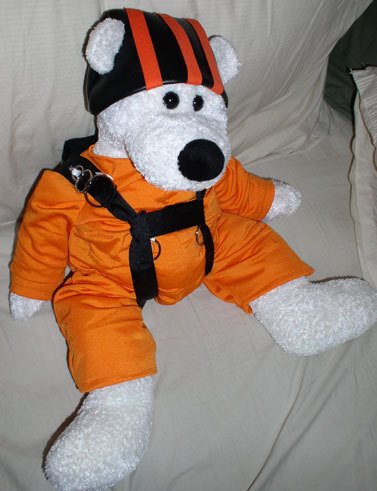Recommended Posts
Quote
You are paying for altitude, not a jump.
Sparky
Experienced jumpers are paying for solely altitude. Students are paying for many things, guidance being among the foremost. I have landed with students on many occasions due to weather; they never pay.
QuoteQuote
You are paying for altitude, not a jump.
Sparky
Experienced jumpers are paying for solely altitude. Students are paying for many things, guidance being among the foremost. I have landed with students on many occasions due to weather; they never pay.
You are right; I was just talking about experienced jumpers. Your policy on refund and that of Tony K. is great. I know it costs you both money to make that call, but it says volumes about your integrity.
Sparky
riggerrob 644
QuoteQuoteWinds are not all the same. 14 MPH is not the only guideline I personally use in deciding whether or not to let a student jump but also the temperament of the winds where gusts and directions are concerned as well at the status of the students ability. If the wind is 13MPH but very gusty, say 1 MPH gusting to 13 MPH this may not be a very good set of conditions to jump in. If you find yourself in a worse case scenario under your reserve landing off in a tight landing area with a wind speed of 13 MPH and it suddenly drops to 0 MPH when you are at 10 feet or vice-versa you must be prepared for such contingencies. I would rather sit one out because catching a load the next day comes much sooner that waiting for a broken bone to heal.
I once read a quote in a Parachutist article that stuck with me, it went something like:
“On windy days, the experienced skydivers sit by the beer line and watch the inexperienced skydivers get experienced”.
Another good rule is that if you feel the need to ask if it's too windy, it is.
>>>>>>>>>>>>>>>>>>>>>>>>>>>>>>>>>>>>>
When the "split" on gusts gets greater than 5 knots, people get bruised on landings, so the better schools keep students on the ground until winds calm down.
riggerrob 644
When skydiving schools converted to large squares (in the 1980s) they vastly reduced inuries until winds got up around 14 knots. This is because student square canopies start backing up in winds over 14 knots.
Backwards PLFs have always been the most difficult landings to master and have always caused the most injuries - under round or square canopies.
So now we have two reasons for not dropping students when winds exceed 14 knots.
ntrprnr 0
Gotta tell you, I think it took more guts for me to scratch than to jump normally. Walking back to the tent, I swore everyone was watching me. Then one of the "pros" (guy with thousands of jumps) said to me, "winds a little weird today, huh? You made the right decision." I then felt much better.
Only person you have to answer to for scratching yourself off a load because of conditions, is you.
"Why'd you track away at 7,000 feet?"
"Even in freefall, I have commitment issues."




I guess if it's your own call, you lose the price of the ticket to 13,500'
Share this post
Link to post
Share on other sites